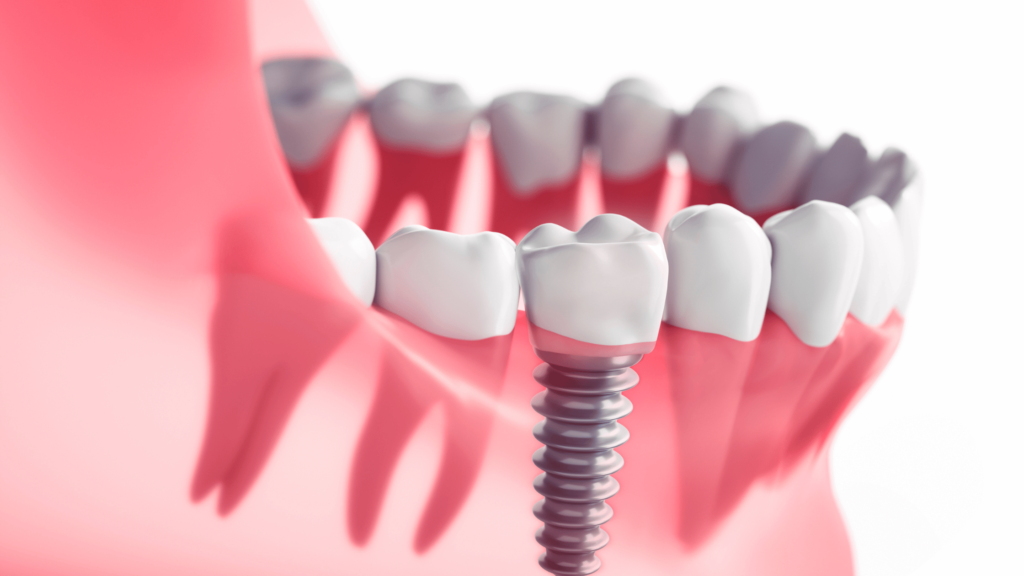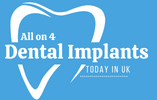Introduction to Choosing Your Dental Implant Solution
As Dr. Elizabeth “Liz” Harrington, a lead prosthodontist with years of experience in implant dentistry, I’ve seen firsthand the transformative impact dental implants can have on one’s quality of life. Today, we’re delving into the world of dental implants, focusing on the All-in-Four technique versus traditional dental implants. A study published in the American Academy of Implant Dentistry highlights a significant trend towards dental implants as a preferred solution for missing teeth, noting an increase in their popularity due to advancements in technology and techniques. This guide aims to shed light on these two options, helping you make an informed decision on which path might be right for you.
Understanding Dental Implants: Basics to Know
Dental implants serve as a foundation for replacement teeth, which feel, look, and function like natural teeth. They’re implanted surgically into the jawbone, where they serve as a base for individual replacement teeth, bridges, or a denture. The main difference between All-in-Four dental implants and traditional dental implants lies in the technique and application. Traditional implants typically involve placing a single implant for each missing tooth, making it a versatile option for various cases. On the other hand, the All-in-Four method uses just four implants per jaw to support a full set of replacement teeth, ideal for patients with significant tooth loss looking for a less invasive and quicker solution. Understanding these basics is crucial as we delve deeper into the nuances of each method, guiding you towards a decision that aligns with your needs and lifestyle.
The All-in-Four Procedure: An Overview
The All-in-Four dental implant procedure is a revolutionary approach designed for individuals who have lost most or all of their teeth. This method involves placing four titanium implants in strategic locations within the jaw. These implants act as anchors for a full arch of prosthetic teeth. One of the most appealing aspects of the All-in-Four procedure is its ability to provide patients with a fixed full-arch prosthesis on the same day of surgery, commonly referred to as “teeth in a day.”
The procedure starts with a detailed consultation and planning phase, where advanced imaging techniques are used to meticulously plan the implant placement. This careful planning ensures the implants can be placed in areas of the jaw with the most bone density, often eliminating the need for bone grafting, which is commonly required in traditional implant procedures. After the implants are placed, a temporary set of teeth is attached, providing immediate function and aesthetics. Over the following months, as the implants integrate with the jawbone, a permanent, custom-made bridge is crafted and then affixed to the implants, resulting in a durable, long-lasting solution.
The All-in-Four technique is particularly beneficial for those who have experienced significant bone loss in the jaw, which can make them ineligible for traditional implants without extensive bone grafting. It’s also a faster solution, offering immediate improvements in aesthetics, function, and oral health, with a shorter overall treatment time and less discomfort.
Traditional Dental Implants: A Closer Look
Traditional dental implants have been the gold standard for tooth replacement for many years. This method involves placing an implant for each missing tooth, or strategically placing implants to support a bridge or denture. Traditional implants are known for their reliability and the ability to offer a solution that closely mimics natural teeth in both appearance and function.
The process begins with a comprehensive assessment to determine the suitability of the patient for implants, which includes evaluating bone density and oral health. If the patient is a good candidate, the implant – a small titanium post – is surgically placed into the jawbone, where it serves as a new root for the crown that will replace the missing tooth. After placement, a period known as osseointegration occurs, where the implant fuses with the bone over several months. This creates a strong foundation for the new tooth. Once this fusion is complete, a custom-made crown is attached to the implant via an abutment.
Traditional dental implants are highly versatile, allowing for the replacement of a single tooth, multiple teeth, or a full mouth of teeth. They are particularly suited for patients who require the replacement of one or a few teeth and those who have sufficient bone density to support the implants. While the process is lengthier and more involved than the All-in-Four procedure, it offers unparalleled strength and longevity, closely replicating the look, feel, and function of natural teeth.
Both the All-in-Four and traditional dental implant procedures offer unique benefits. The choice between them depends on various factors, including the patient’s dental health, bone density, financial considerations, and personal preferences. As we continue to explore the differences between these two options, it becomes clear that modern dentistry provides multiple pathways to restoring smiles with efficiency and effectiveness.
Comparing the Two: Costs, Time, and Suitability
When faced with the decision between All-in-Four and traditional dental implants, several factors come into play, notably costs, treatment duration, and individual suitability. The All-in-Four technique often presents a more cost-effective solution upfront, primarily because it requires fewer implants and typically avoids the need for bone grafting, which is common in traditional implant procedures. This streamlined approach not only reduces the overall cost but also shortens the treatment time significantly. Patients can walk out of the surgery with a full set of provisional teeth on the same day, a prospect that is particularly appealing for those looking for immediate results.
Traditional dental implants, while potentially more costly due to the need for a higher number of implants and possible additional procedures like bone grafting, offer a bespoke solution tailored to individual needs. Each implant is matched to replace a specific tooth, providing a level of customization and aesthetic appeal that is hard to match. This method is more time-consuming, with the entire process from implant placement to the fitting of the final crown taking several months, but it allows for greater flexibility in addressing specific dental issues.
Suitability for either procedure depends on various factors, including the patient’s oral health, the density of the jawbone, and the number and location of missing teeth. The All-in-Four option is particularly suited for patients with significant tooth loss and those who may have been told they are not candidates for traditional implants due to bone loss. Conversely, traditional implants are ideal for patients with adequate bone density or those requiring the replacement of one or a few teeth.
Maintaining Your Dental Implants: Essential Care Tips
Regardless of which dental implant solution you choose, proper care and maintenance are crucial to ensure their longevity and health. Both All-in-Four and traditional dental implants require a commitment to good oral hygiene. This includes regular brushing and flossing to prevent the build-up of plaque and bacteria, which can lead to gum disease and, ultimately, jeopardize the implants.
It’s also vital to keep up with regular dental check-ups and cleanings. These appointments allow for the early detection of any potential issues and ensure that your implants and natural teeth are maintained in top condition. For All-in-Four implants, special attention might be needed to clean under the bridge, and your dentist or hygienist can recommend specific tools or techniques to help with this.
Lifestyle choices can also impact the longevity of dental implants. Smoking, for example, is known to significantly increase the risk of implant failure. Thus, patients are often encouraged to quit smoking before undergoing an implant procedure. Additionally, wearing a mouthguard at night can protect implants from damage due to clenching or grinding, a condition known as bruxism.
By following these care recommendations, patients can enjoy the full benefits of their dental implants for many years. Whether you opt for the All-in-Four procedure or traditional implants, the key to success lies in diligent care, regular dental visits, and a commitment to maintaining excellent oral health.
Making Your Decision: Personal Reflections and Professional Advice
Choosing between All-in-Four and traditional dental implants is a significant decision that can dramatically influence not just your oral health, but your overall quality of life. As a lead prosthodontist with extensive experience in both procedures, I understand the complexities involved in making this choice. Reflecting on my years of practice and the countless patients I’ve guided through this process, I believe the decision comes down to a combination of personal circumstances, clinical needs, and lifestyle preferences.
Firstly, consider your immediate and long-term goals for dental restoration. If speed and efficiency are paramount, with a desire for minimal surgeries and a quick recovery, the All-in-Four option might be more suitable. This choice is especially relevant for those who have suffered extensive tooth loss and are looking for a complete transformation in a relatively short period.
Conversely, if your situation allows for a more gradual approach, with an emphasis on individual tooth restoration and achieving the utmost in aesthetic and functional precision, traditional implants may be the way forward. This route is particularly beneficial for those with adequate bone density and perhaps a smaller number of teeth to replace.
Consultation with a dental professional who can assess your specific situation is crucial. This dialogue will not only involve discussing your dental history and examining your oral health but also understanding your expectations and lifestyle. As we embark on this journey together, my role is to provide you with all the information you need, presenting the pros and cons of each option, to help you make an informed decision that best suits your needs and aspirations.
Final Thoughts on Selecting the Right Dental Implants
In conclusion, the journey to restoring your smile through dental implants is a personal and transformative experience. Whether you choose the All-in-Four method or opt for traditional dental implants, the key is to make an informed decision that aligns with your dental health, aesthetic goals, and lifestyle. Both options offer their unique advantages, and the best choice varies from one individual to another.
As you consider your options, remember that the value of a restored smile extends far beyond aesthetics. It’s about regaining your confidence, functionality, and overall well-being. My advice is to engage in open and honest discussions with your dental care provider, ask questions, and express any concerns you may have. As your dentist, it’s my privilege to assist you on this journey, offering professional guidance based on a wealth of experience and a deep understanding of your individual needs.
Embracing the path to dental restoration is a significant step towards not only improving your oral health but enhancing your quality of life. With the right information and support, you can look forward to achieving a smile that is as healthy as it is beautiful.


